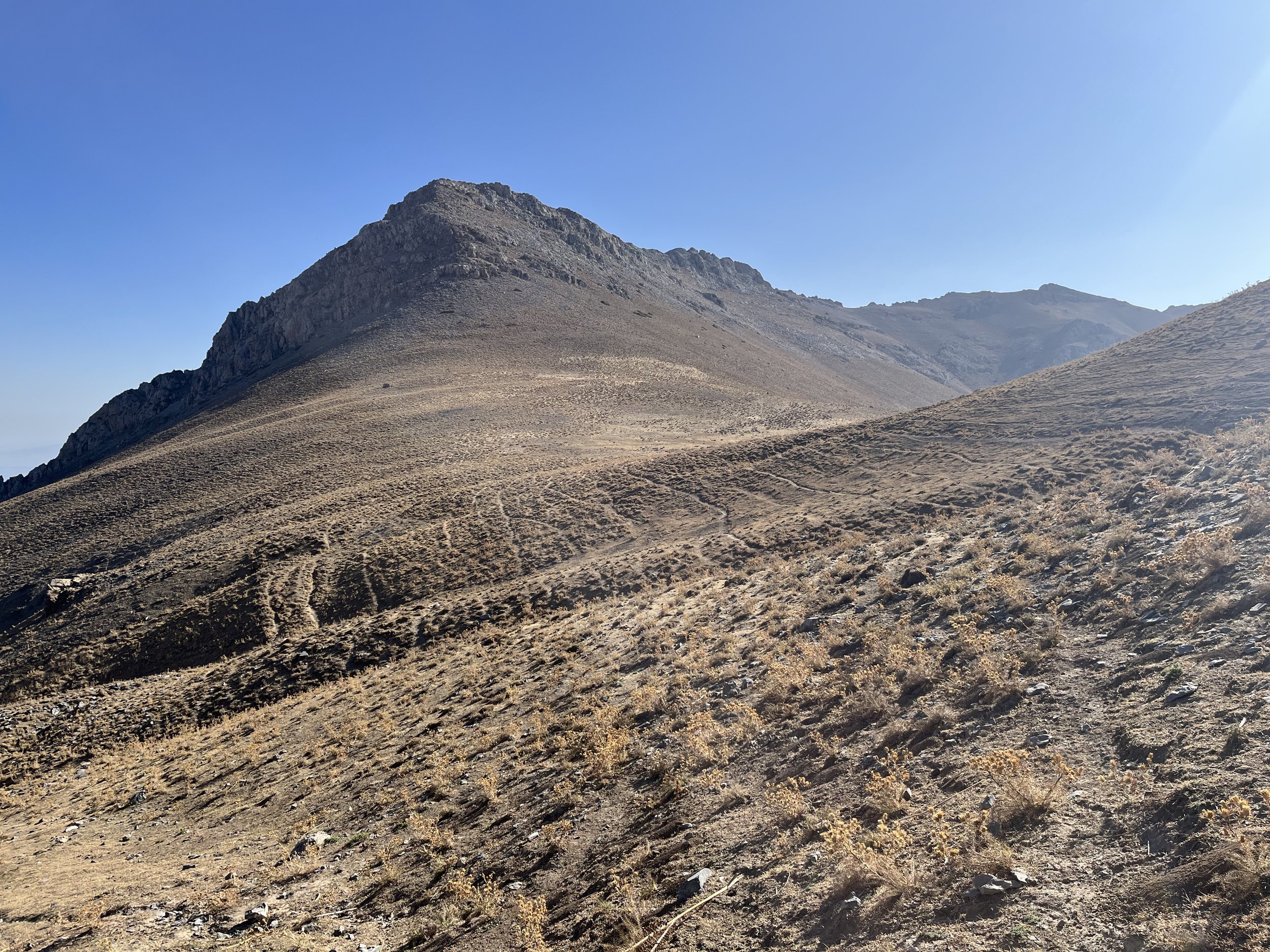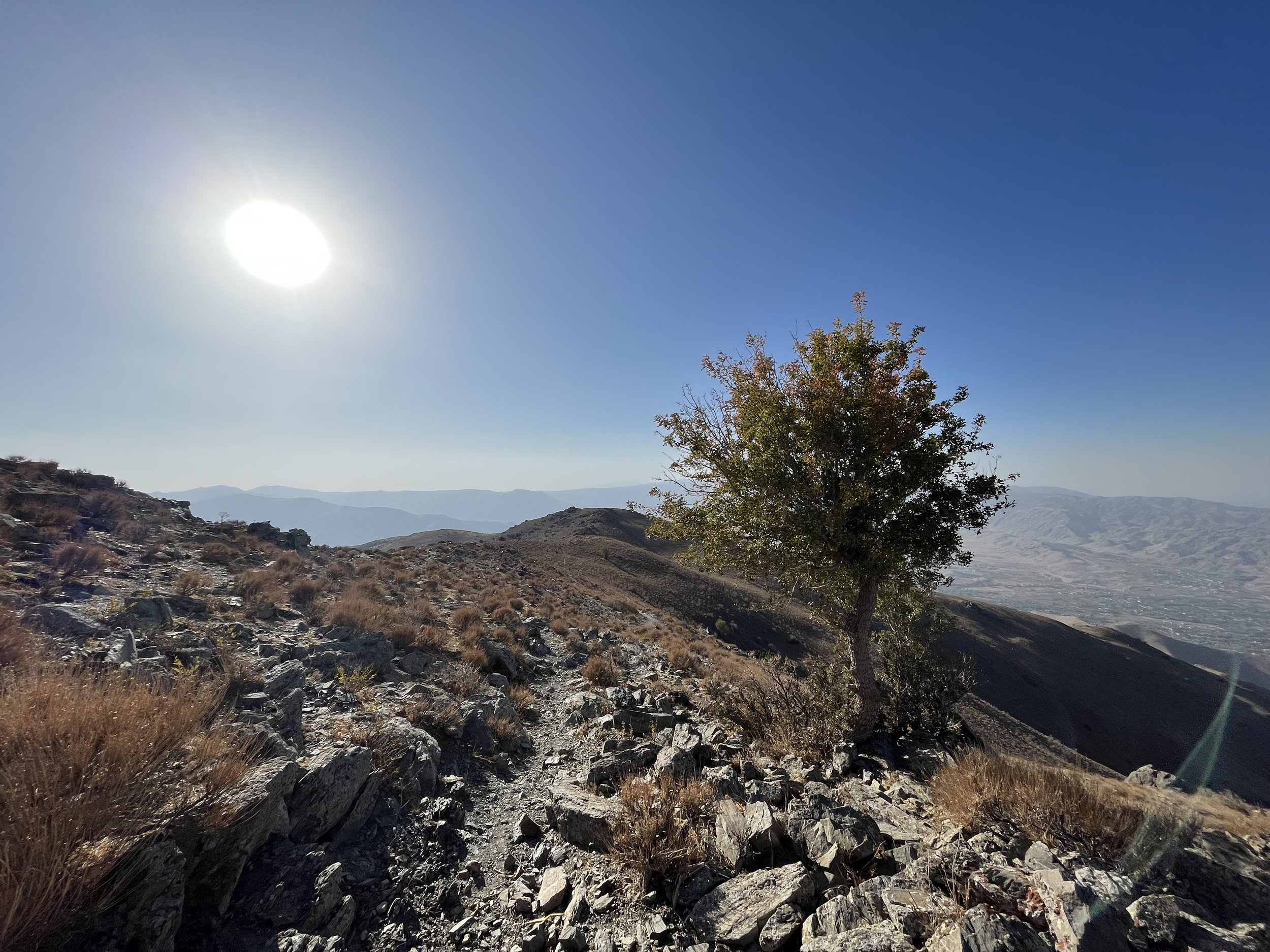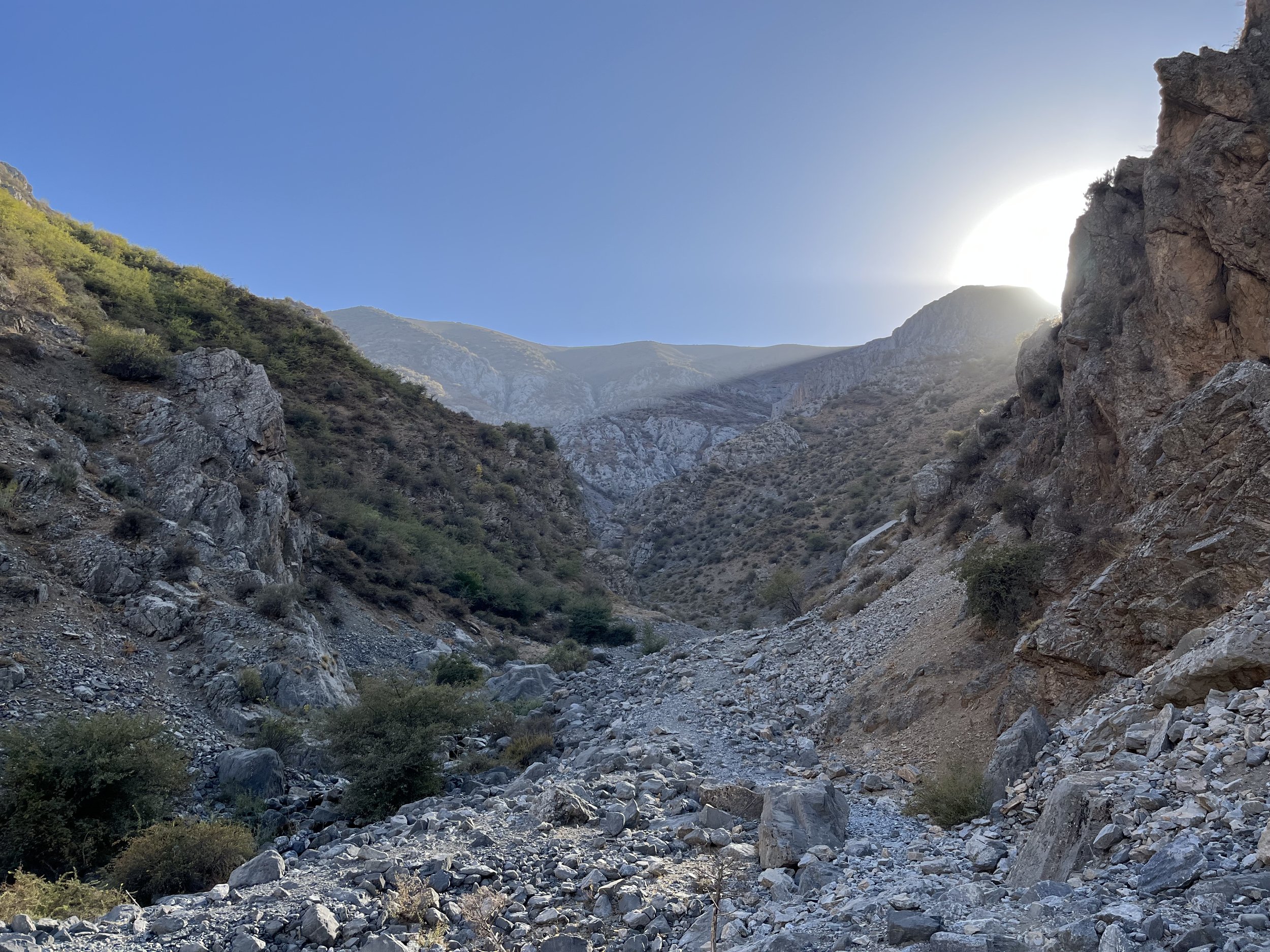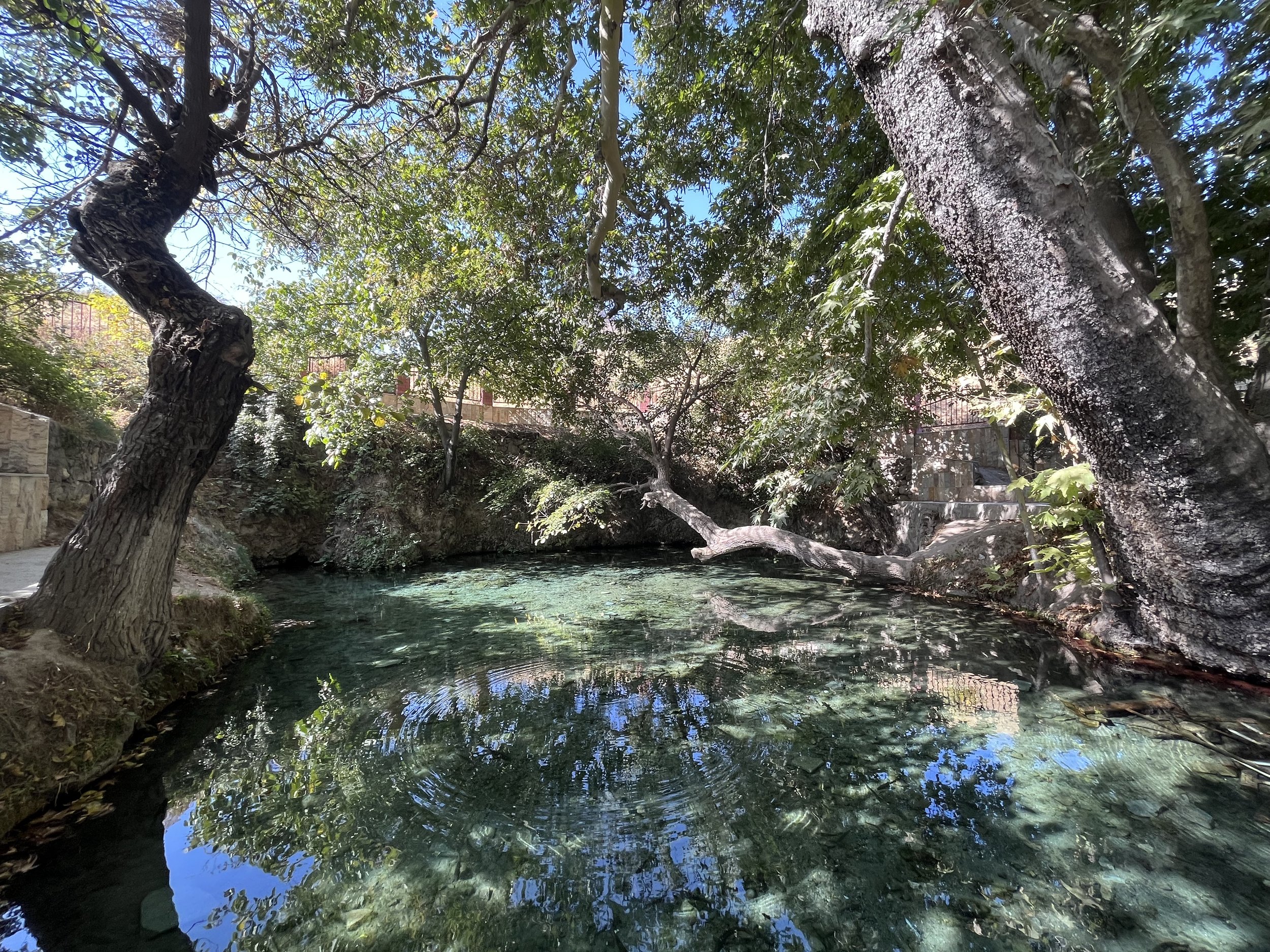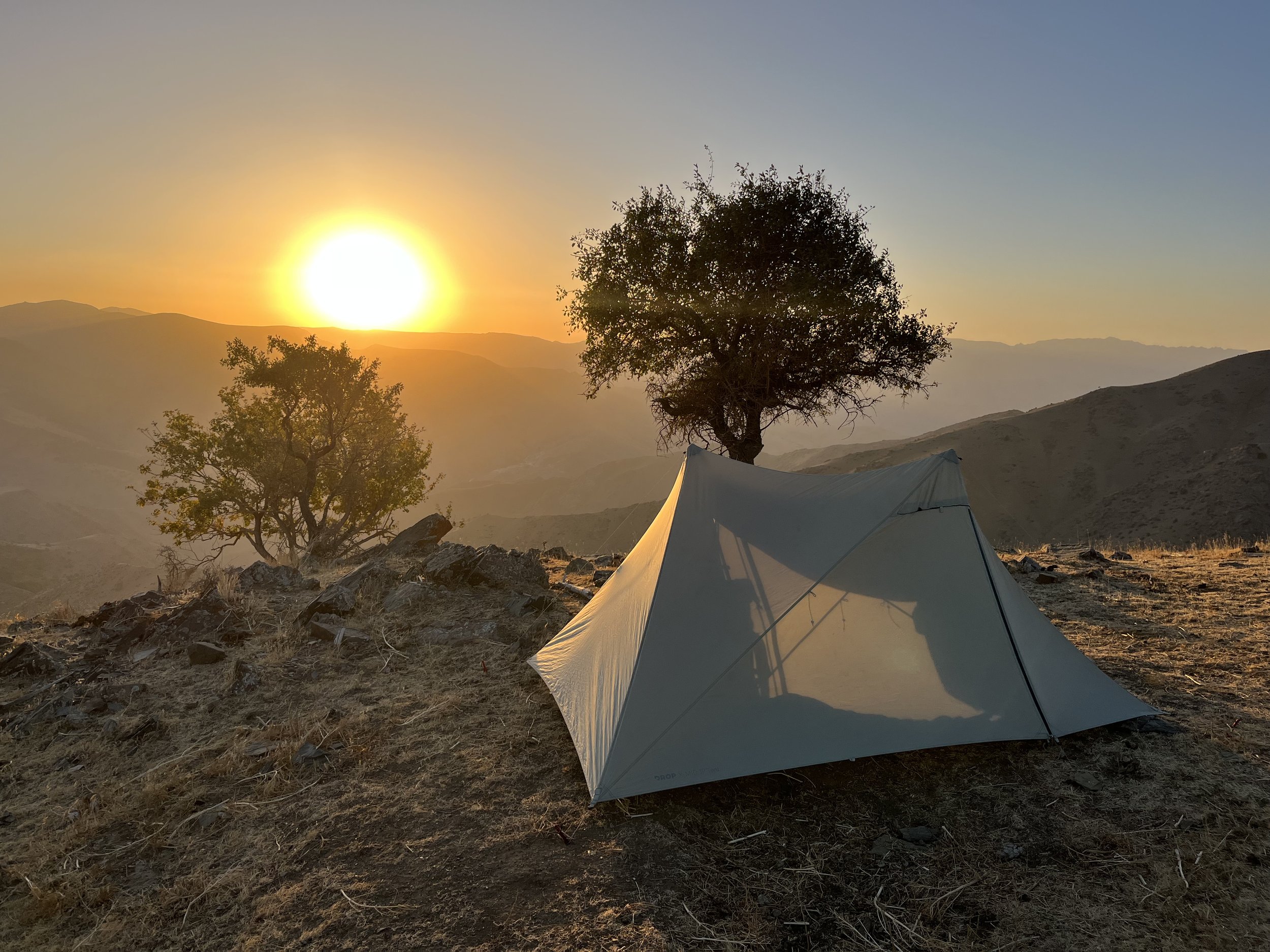
Samarkand-Urgut Hike
Samarkand-Urgut Hike
The Samarkand-Urgut Hike is a 100km hike between the cities of Samarkand and Urgut that can be done in either direction. The hike takes you through the tail end of the Zarafshon Mountains that begin in Tajikistan and slowly taper out in Uzbekistan. On this route you will see, aside from the mountain scenery, small villages, farms, local tourists, plus shepherds and their livestock. There are some guesthouses, but you will still need a tent for camping.
Who is this hike for?
This is not a hike for someone looking for an unforgettable hike that is soon to become world famous. The route is… OK. Samarkand is not famous for its mountain hiking. The photos and videos below are the highlights - as good as it gets. Some may find it underwhelming or a little boring. Maybe a short day-hike in the area may be a better choice for you.
This could be a hike for someone who is in Central Asia in the spring or fall and can’t go hiking at higher altitudes on much better routes in Tajikistan and Kyrgyzstan. You could also use this as a warm-up hike for a hike in Tajikistan. This could be a hike for someone who is not going to visit Tajikistan or Kyrgyzstan, but still wants to go for a hike while visiting Samarkand. Or maybe you just really like hiking and don’t want to spend all your time in Uzbekistan looking at famous historical buildings.
The video below is from the western half of the trail (in the spring season).
Route information
Download the GPS tracks and waypoints:
To be clear, you must have a tent. There are guesthouses on this route, but you cannot hike from guesthouse to guesthouse continuously. Pick any spot away from the villages. Don’t camp in sight of a house.
You need to carefully manage water supplies. In some areas, there is plenty of water (springs in the mountains, food stores in villages, water pipes near farms), but in some areas you need to carry lots of water.
Food supplies are limited in selection. Small villages stores - at their best - have bread, fruit, salami-type meat, canned fish, crackers, cookies, seeds/nuts, raisins, chocolate, potato chips, and instant noodles.
In the rural areas nobody speaks English, and only a few older men could speak Russian.
Minor annoyances include barking shepherd dogs (but far less aggressive than those in Tajikistan and Kyrgyzstan),
Dangers and annoyances: a very brief section walking along a busy fast highway. As for people, a shepherd was aggressively asking (in Russian) for my most important pieces of gear (“give me your tent, give me your sleeping bag“) - I just kept saying “no sorry, I need that for sleeping” until he and his friend rode off on their donkeys. I think he may have been mentally ill. All other shepherds were friendly and kind.
Expensive guesthouses are a problem. This is not Kyrgyzstan or Tajikistan. Expect to pay double or more in Uzbekistan what you pay for the equivalent quality in mountain guesthouses and homestays in Kyrgyzstan and Tajikistan. The guesthouses in the mountains are targeted at tour company groups, not individual solo travelers. Many are asking $40-60 or more per night for solo travelers. Cheaper rates can be had at less luxurious guesthouses, but you’ll need to negotiate. You’ll only find guesthouses on the second day of your trip (if hiking from west to east).
Unattended guesthouses were an annoyance in the areas south of Samarkand. There was often nobody home, and a phone number on a locked gate to call and make a reservation (and they don’t speak English). These are for tour companies to book for their clients well ahead of time.
Best season to hike
Spring or fall? Fall is very dry, spring is more likely to have short spells of rain. You need to be more careful with water sources in the dry fall. You won’t get nice green grass and flowers in the fall. But you get consistently dry weather and dry trails in the fall. And in fall most of the shepherds and flocks have left the mountains, leaving you with more peace (and less guardian dogs).
If you are OK with some warm weather hiking, then aim for the last week of September as the earliest possible starting date. First week of October or later for everyone else. In the spring I would try to be off the trail by the last week in May. But note that hot weather can arrive unexpectedly at an earlier date. A mid-May finish would be safer. So, stay off the trail from mid-May until end of September.
Winter? Sure, but you will need to adjust my clothing recommendations and take more warm clothing (plus rain gear). And you will need to keep an eye on the mountain tops for snow. As soon as they are white, there is no chance to hike through them.
Direction of hike
You can start at either end. Westbound or eastbound, both are doable. But if you start in the east from Urgut, you must go up a steep trail to the top of the mountains. From the western end, starting in Yuqori Ohalik, the trail gradually gains elevation.
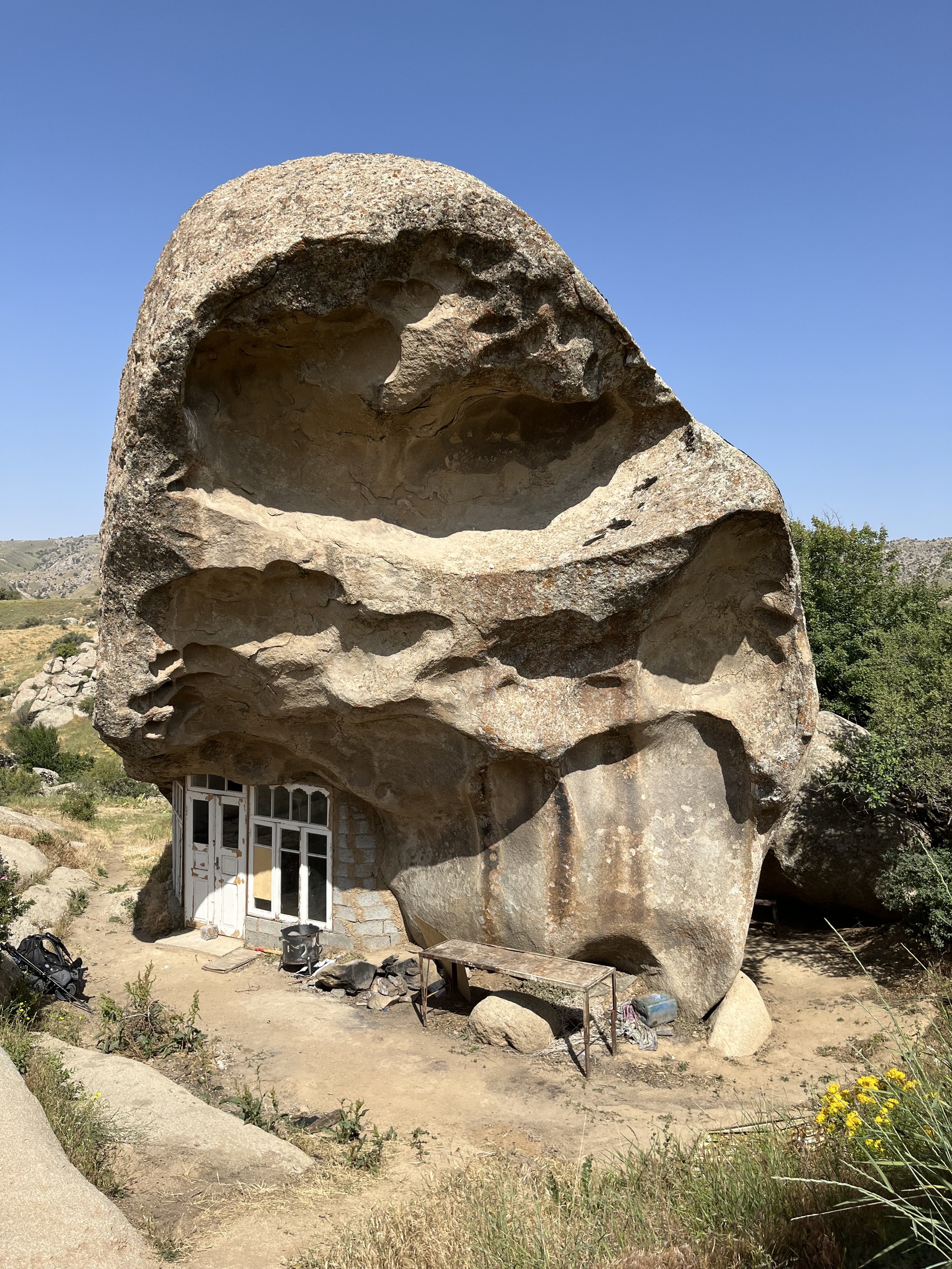
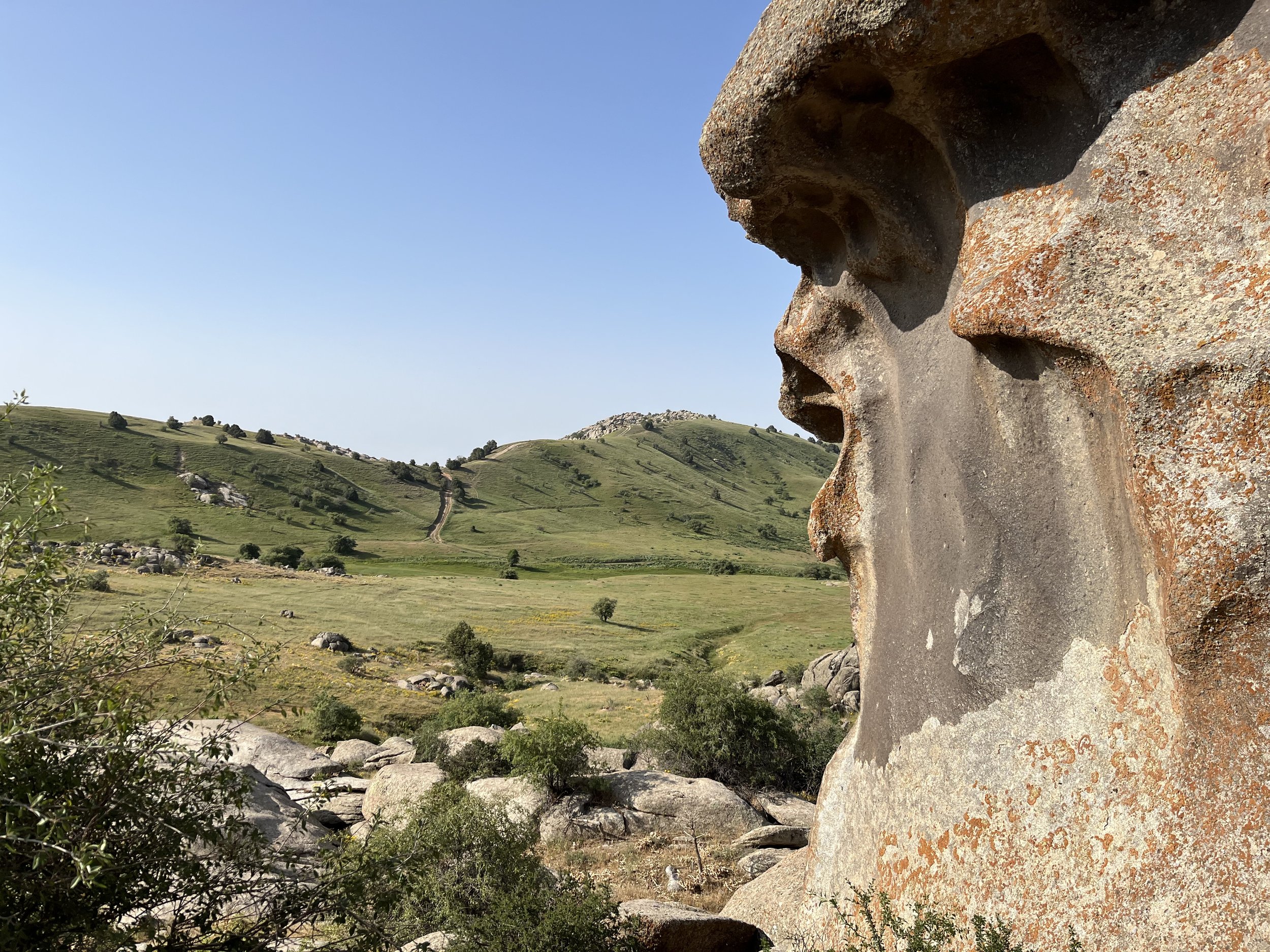

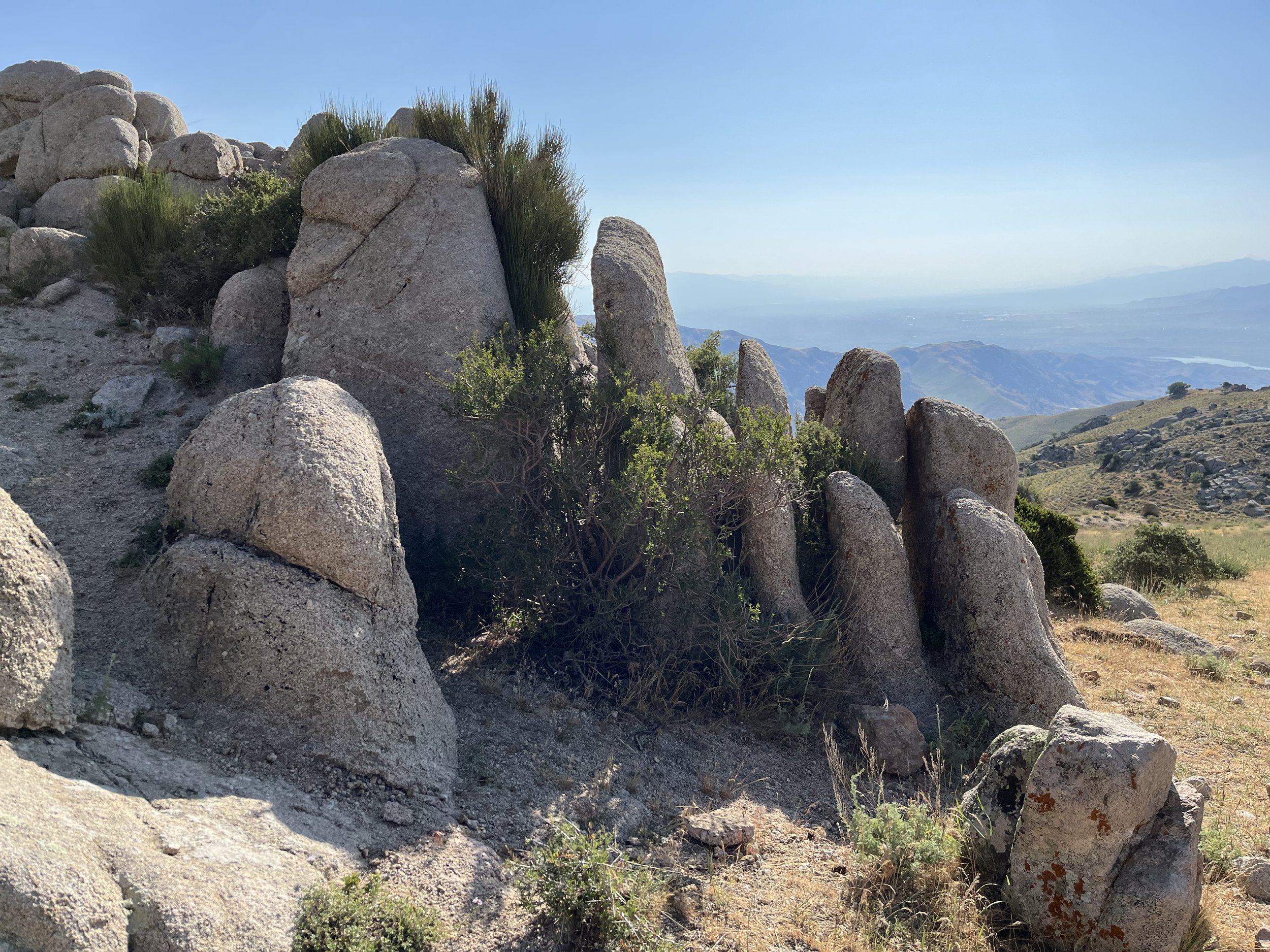
Gear Recommendations
A tent is nice for privacy, but you can definitely get by with just a tarp. In the fall dry season you could “cowboy camp” under the stars with maybe just an emergency bivy in case of rain.
The ground is very hard, especially on the steppe and on the ridges. If you find that you need an air mattress for comfort reasons, this is the place to use one. I slept on a thin closed-cell foam mat, and it was doable, but not very comfortable.
As the ground is hard and rocky, don’t bring tent stakes that are too flimsy and weak.
You can definitely skip the hiking boots and use hiking shoes or even trail runners.
I had an ultralight disposable rain jacket. No need for a good quality rain jacket. I skipped the rain pants. I never used the jacket, aside from as a pillow. But you may get rained on, particularly in the spring.
For clothing, I personally would skip insulating base layers, rain pants and gloves (sun gloves are good enough). I would have a light mid-layer (like a fleece hoody), and skip the insulating jacket (“puffy“). The yugan stinging plant grows in this area in the mountains (in the spring). Long pants will protect you from that.
There are livestock, shepherd dogs, people and wild animals in the mountains. So I use a water filter and then add a chemical treatment as well if I’m suspicious of the water source. Don’t use chemical treatment alone. With the livestock and dogs, cryptosporidium is a concern, and you need to filter for that. I didn’t filter or treat spring water.
You need to regularly check your position on your phone, as the trails often fork, and in some locations you will be moving over open terrain from one point to another. Plus you will be taking photos/videos. Bring an external battery pack to charge your phone.
Photos below: a range of shepherd shelters.
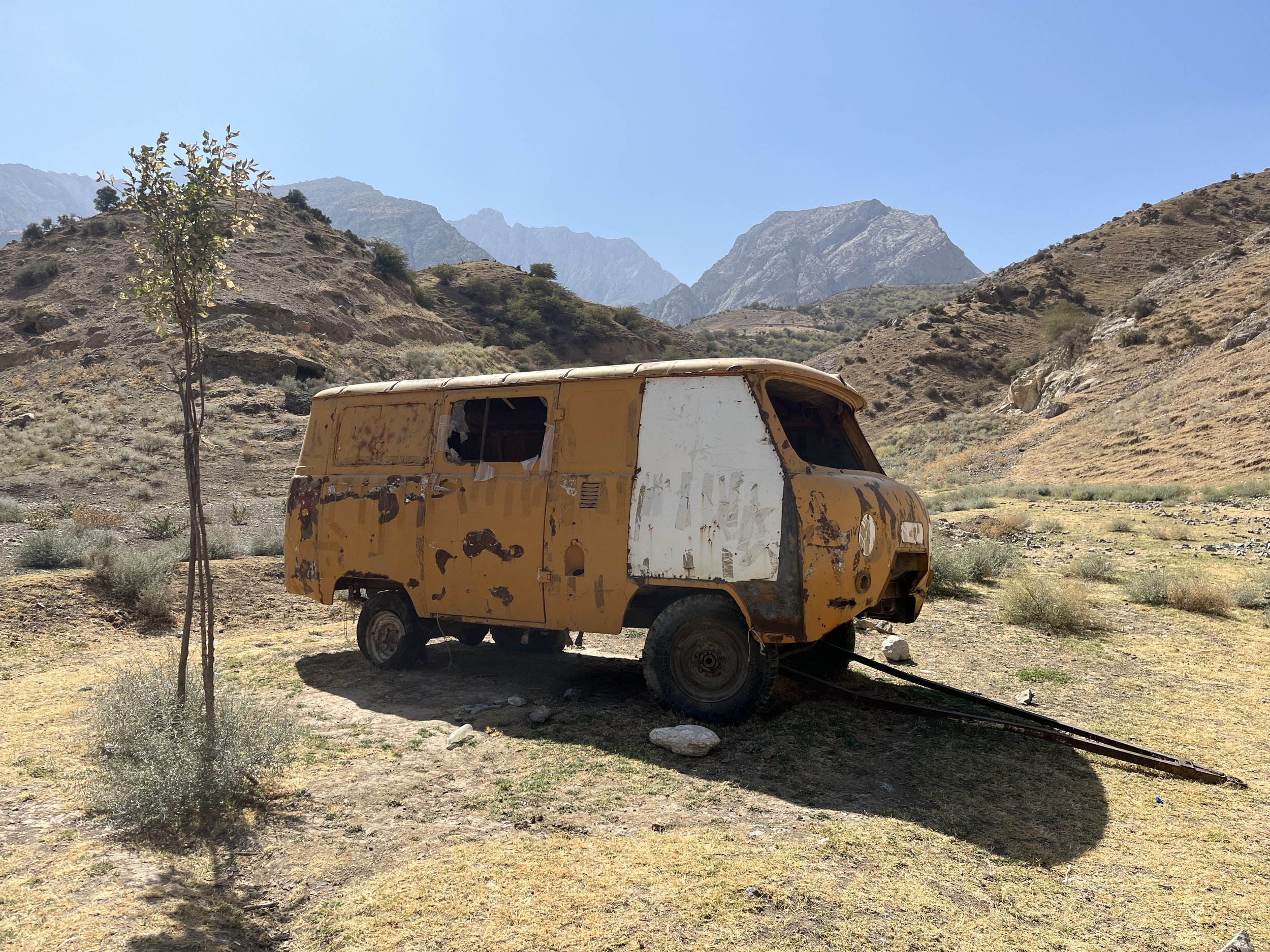
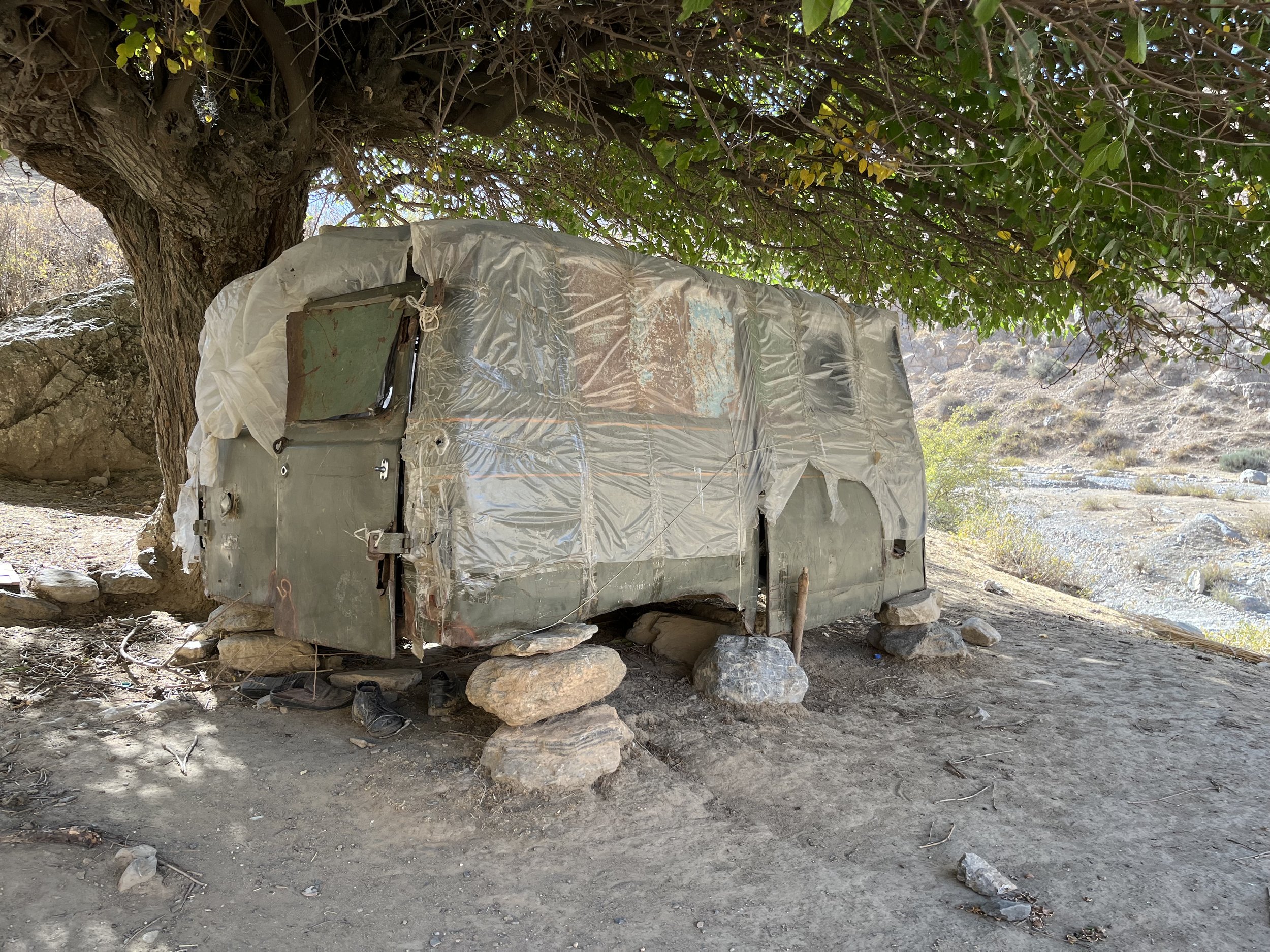
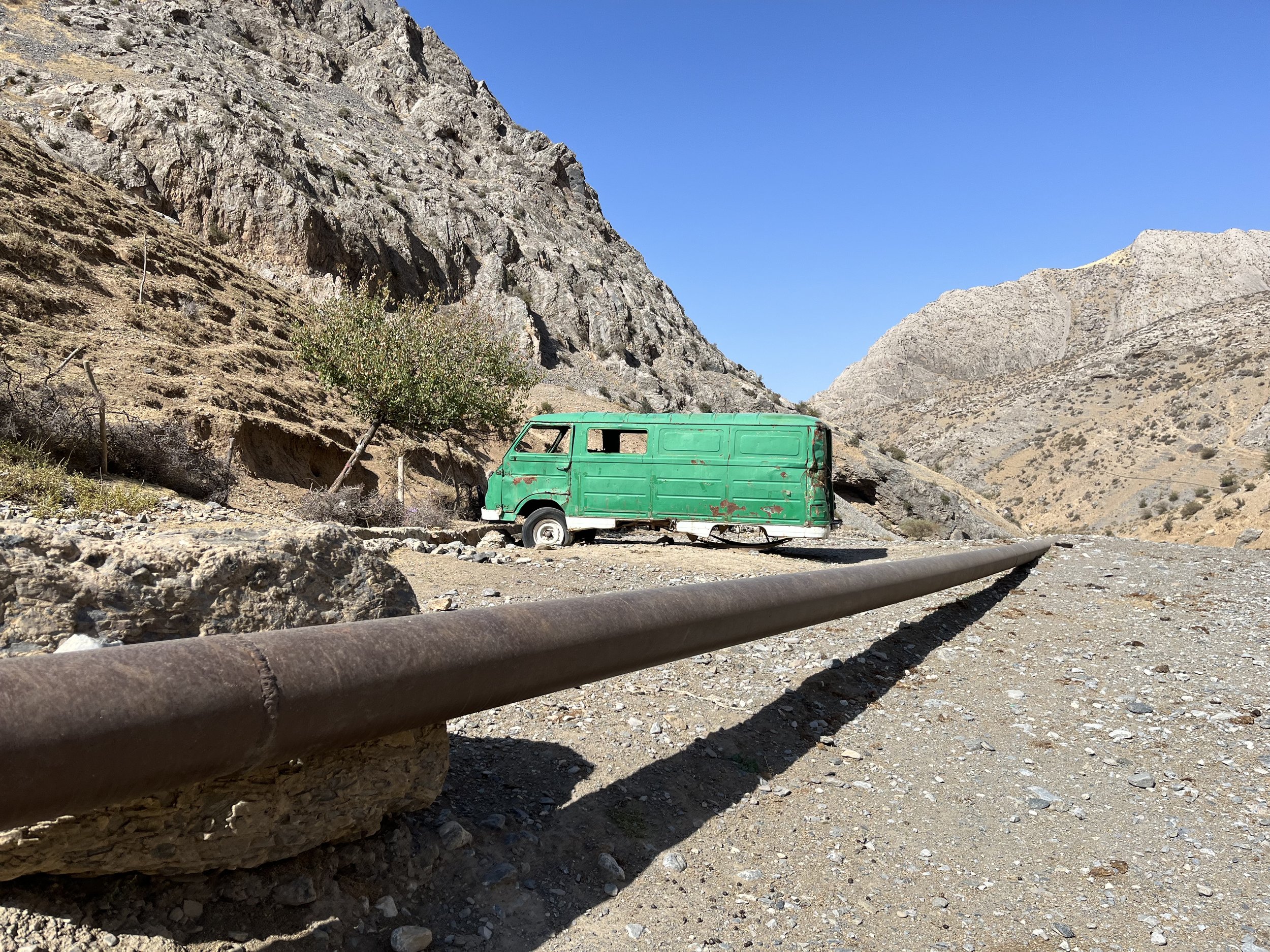
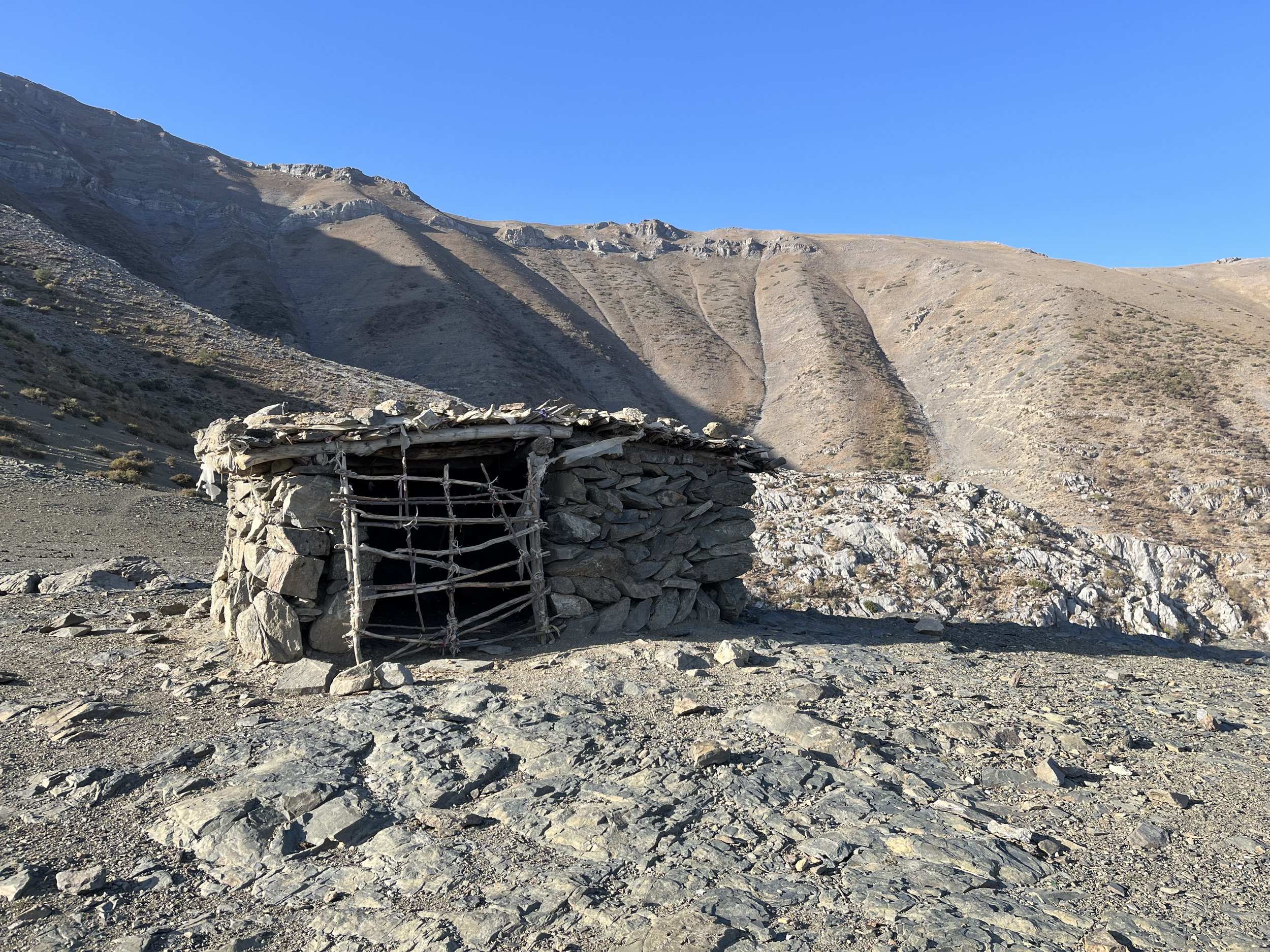
Water
I usually would leave a water source with 2 liters of water. For a couple of longer stretches with a plan to camp overnight, I would carry more (up to 3-4 liters, including for making dinner and washing myself). For reference, I am about 70kg/150lbs.
I was usually carrying too much and would arrive at a good water source with plenty of water to spare. But you now have my water waypoints in the GPX files and can plan better than I did and have a lighter bag.
If you travel later in the fall season or earlier in the spring season you can reduce your water needs with the lower temperatures.
Note that I made water notes for the eastern section (between Kitob Pass and Urgut) in the dry fall season, so the water waypoint should be good for both fall and spring. But for the western section I visited in the spring, and I cannot guarantee that every single water waypoint will still have flowing water in the drier fall. If this worries you, you can take water from village shops and/or any water stand pipe/spigot in the villages.
Mobile/cell phone reception
Reception is OK near villages, roads and on ridge tops. But in the small villages there may be a signal, but not for the company you have a SIM card through. The images below taken on ridgetops have a direct line of sight to the city and smaller towns, but I generally only have 1 or 2 bars of signal - good enough for text messages and email. Sending an image was generally very slow. You should have an offline map as you can’t count on always having internet.
Getting to the trailhead
For a start in Urgut, take a taxi from Samarkand to Urgut’s “Chor Chinor” complex. In 2023 I booked a taxi on the Yandex Taxi app (you usually can’t add the app until you are in Central Asia) and paid $11. This is so much easier than getting to a mini-van station in Samarkand and squeezing into a tiny mini-van to get to a point in Urgut where you will still have to walk to the complex. $11 gets you a pick-up at your door in Samarkand and a drop-off at the gates to the Chor Chinor complex ($2.5 entrance price).
For a start in Yuqori Ohalik, you can take a mini van (“marshrutka“) from Samarkand (near the Nodir Devon Begi madrassa). follow the instructions at Caravanistan. The mini-vans are so small that I indicated I was "two people" and paid 10,000 so that my backpack would fit. The destination name is in the min-vans' window. In 2023 this was in Uzbek Cyrillic alphabet: Оҳалик. This area has mini-vans going to many different destinations.
Getting from the trail back to Samarkand
In Yuqori Ohalik there is a waypoint on the GPS track that is the end/start of the marshrutka line that goes between Samarkand and this area. Fare is 5000 som to "Selski" bus stop in southern Samarkand (near the Nodir Devon Begi madrassa). At this waypoint there is only one destination for the mini vans here.
From Urgut, first see if a Yandex Taxi is available to drive into Samarkand (I’m not sure how many drivers in this area are on that taxi app). If that doesn’t work, starting walking into the center of the town. If you aren’t propositioned by a taxi driver ($10 would be OK to get into central Samarkand), then be on the look out for mini-van marshrutkas heading into Samarkand. They likely won’t have “Samarkand“ on a sign in their window, but rather the name of a station in Samarkand. Try for the “Kaftarxona” bus station (Кафтархона in Cyrillic). But this will mean another mini-bus, taxi or bus into central Samarkand. A personal taxi is probably worth the price. I find that it is way easier to just say “Registon“ and get dropped in central Samarkand at the Registon complex than it is to try and get a taxi driver from outside the city to find your accommodation (unless you speak a local language).
